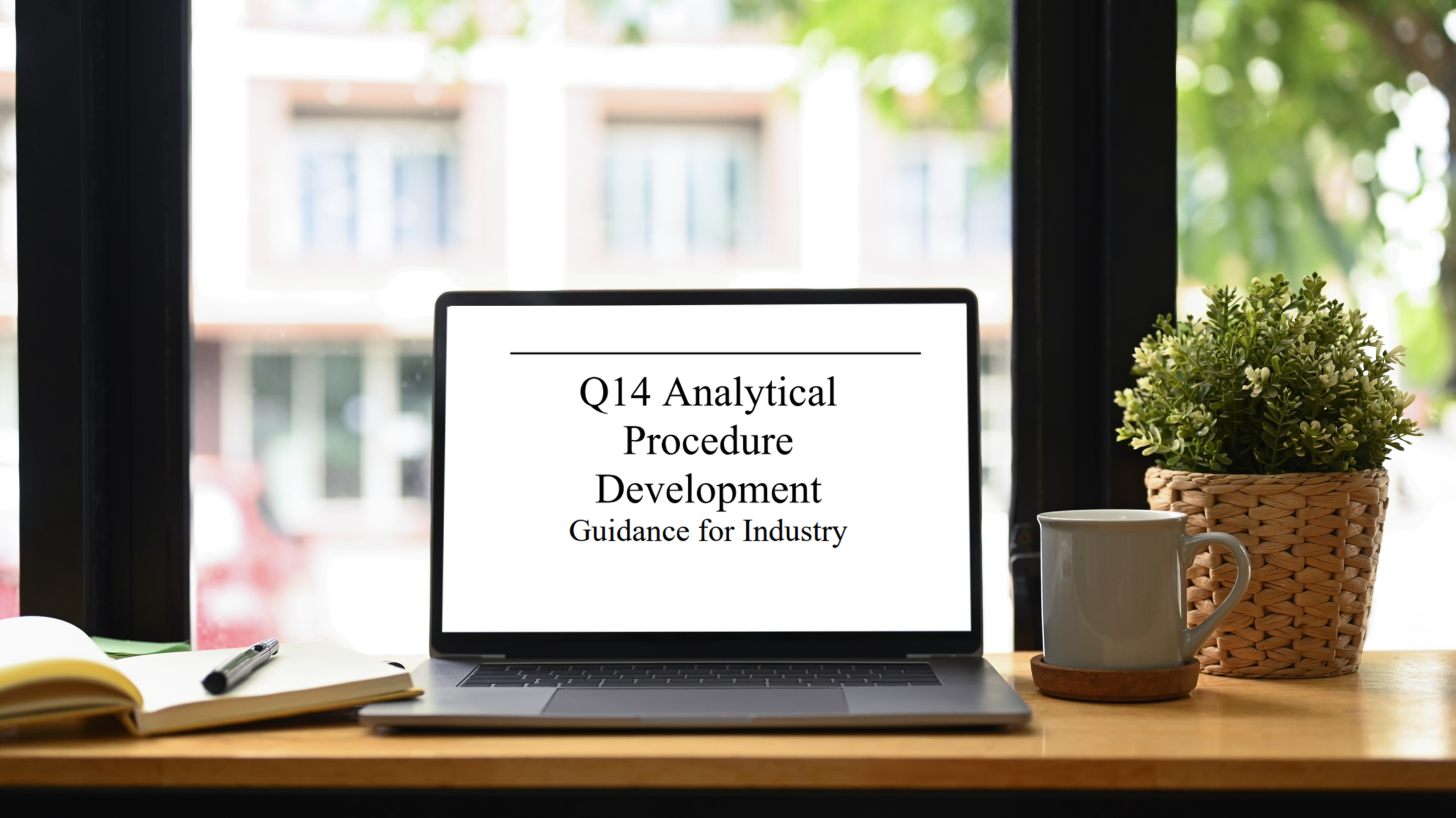On March 7, 2024, the FDA adopted ICH Guideline Q14 Analytical Procedure Development, which became official on November 1, 2023. This guidance complements updated ICH Guideline Q2(R2) Validation of Analytical Procedures, which also became official on November 1, 2023 and was adopted by the FDA on March 6, 2024.
The Q14 guidance (here) combines a science- and risk-based approach to developing and maintaining the suitability of analytical test methods over their lifecycles. The minimal or traditional approach to developing analytical test methods is still a valid process, which includes identifying the attribute to be tested, selecting the appropriate technology/instrument/apparatus, assessing the method’s performance characteristics, and documenting the analytical procedure with controls to ensure the performance of the test method and the quality of the measured result. The Q14 guidance also provides an enhanced systematic approach to method development, which includes elements from the minimal/traditional approach plus risk and knowledge assessments for identifying test method parameters and their impact on the analysis, experimental modeling for ranges, and interactions between test method attributes with their set points and/or ranges as part of the analytical procedure control strategy. An enhanced approach to method development would provide a better understanding of the method parameters’ impact on test method performance, plus a more efficient regulatory approach for any related post-approval changes.
The Q14 guidance also discusses key elements in the development of an analytical test method, which include the Analytical Target Profile (ATP), knowledge management, risk management, robustness and parameter ranges, analytical procedure control strategy, lifecycle management, and post-approval changes.
The ATP defines the purpose of the test method, the product attributes to be measured, performance characteristics and criteria, and measurement requirements, which would drive selection of the analytical technology/technique to be pursued. Examples of ATPs are provided in the appendix of the Q14 guidance.
Knowledge management includes any internal/external knowledge of the product/test method, which would aid in the selection of a suitable analytical technique. Risk management addresses the quality of the reported result by assessing the impact of the test method’s parameters on the method’s performance.
Robustness can be evaluated through a univariate approach by varying a single test method parameter or through a multivariate approach by varying multiple test method parameters using a Design of Experiment (DoE) model to assess the interaction between parameters and their impact on the test method’s performance. Through the robustness experiments, Proven Acceptable Ranges (PARs) and Method Operable Design Regions (MODRs) would be established.
The analytical procedure control strategy identifies method parameters that need control and system suitability tests to ensure that the test method is suitable during routine use and throughout its lifecycle.
Over the test method’s lifecycle, changes may be for new technology, method improvement, or method transfer. In each case, the risk associated with the change would need to be evaluated and the appropriate bridging strategy would need to be identified.
The Q14 guidance provides a very detailed overview of the analytical method development process, from the initial development of the test method through maintenance of the test method over its lifecycle. If you have any questions about the March 2024 FDA Guidance Q14 Analytical Procedure Development or need assistance with its implementation at your firm, Lachman can help! Please reach out to us at LCS@LachmanConsultants.com.




